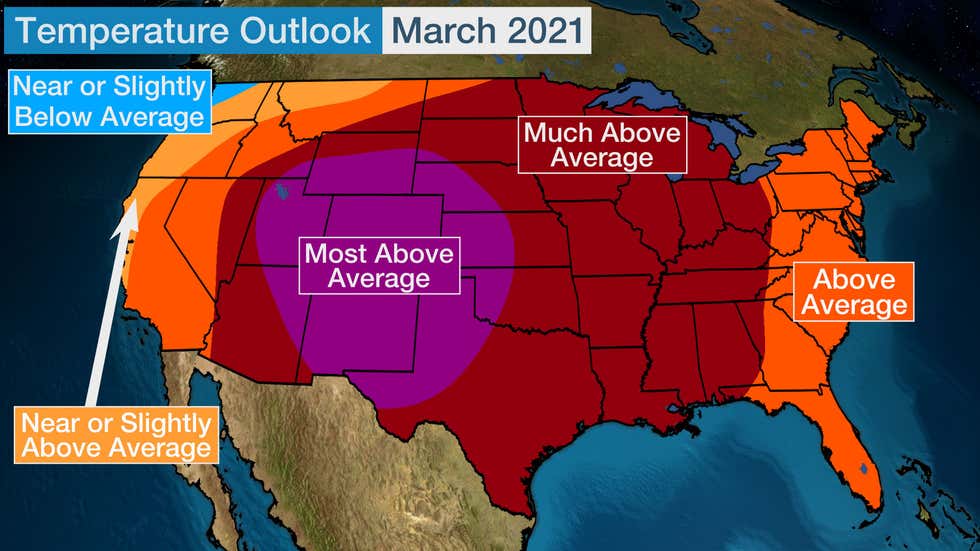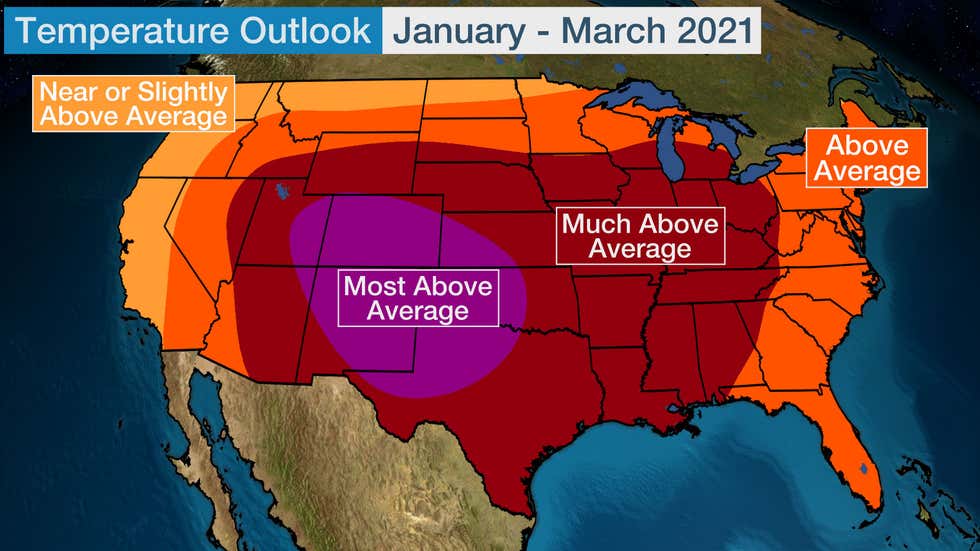
This outlook first appeared on weather.com and was written by Linda Lam
Temperatures across much of the United States will be milder than average for the remainder of winter and into the start of spring, according to the latest outlook issued by The Weather Company, an IBM Business.
Above-average temperatures are expected across most of the Lower 48 from January through March. Temperatures will likely be the most above average from eastern Utah southeastward into northwestern Texas.
Areas near the West Coast and the northern tier from Washington into northern Minnesota may experience temperatures near average or slightly warmer.
However, it is important to point out that each month of this outlook could have temperature fluctuations that differ from this overall trend.
What’s Driving This Temperature Forecast?
The La Niña event appears to have peaked and will likely influence weather conditions across the globe this winter. As a reminder, La Niña is the cooling of sea-surface temperatures in the equatorial Pacific Ocean.
La Niña events are typically associated with warmer-than-average conditions for parts of the U.S. in January and February, especially in the East and South, but that can vary depending on atmospheric blocking that changes the jet stream pattern.
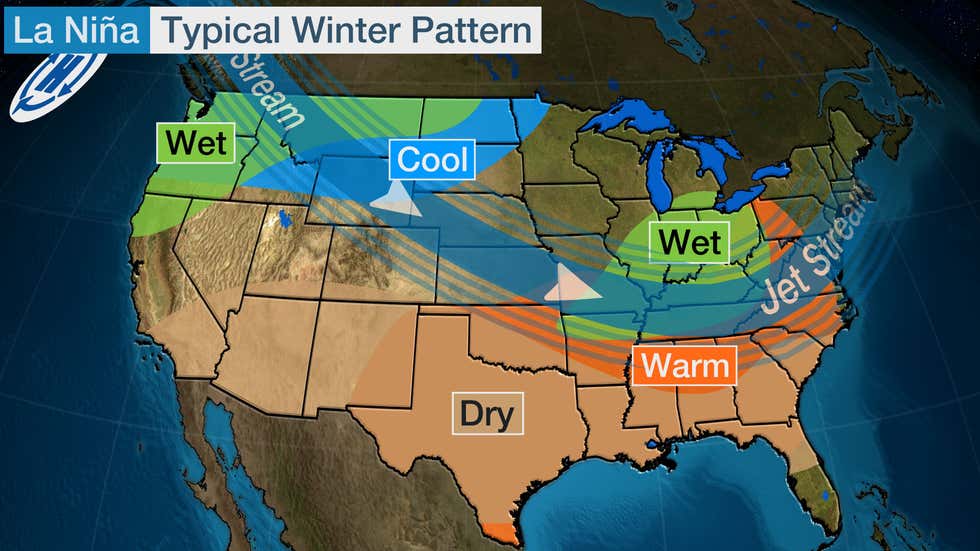
The recent upper-level pattern isn’t what is typically expected in a La Niña winter. Specifically, ridging has developed in the North Atlantic, which indicates the North Atlantic Oscillation (NAO) has trended negative – favorable for atmospheric blocking.
Strong blocking, particularly in the North Atlantic, can override La Niña.
“Given the tendency towards more North Atlantic ridging than expected in December and supported by new climate model solutions, which are a little less extreme with the eastern U.S. warmth, we’ve cooled temperatures in the eastern U.S. a bit in January and February, and have shifted the focus of the most anomalous warmth to the central/western U.S.”
– Todd Crawford, chief meteorologist at The Weather Company
When North Atlantic blocking is more frequent in a La Niña winter, the warmest temperatures compared to average tend to be across the West, with colder temperatures reaching into the Southeast, which is what has been observed so far in December.
A more typical La Niña pattern may return in January and February, but the recent pattern has resulted in more uncertainty in the North Atlantic pattern this winter, leading to additional forecast changes.
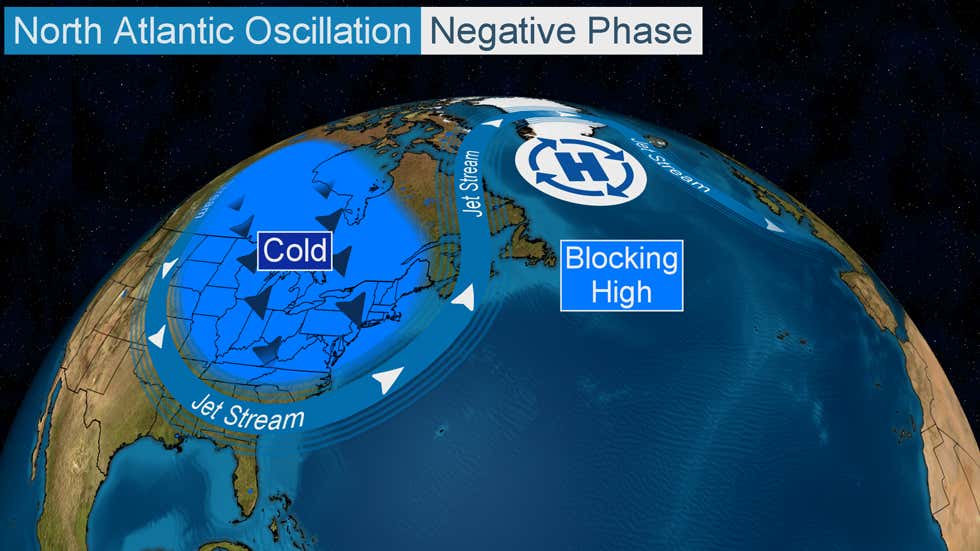
January 2021
Warmer-than-average temperatures are anticipated from the East Coast into the Great Basin in January, with much-above-average conditions stretching from the mid-Mississippi Valley westward into eastern Utah. However, January is the coldest time of year for much of the U.S., so it is important to keep in mind that an above-average forecast still suggests it will be cold at times.
Temperatures may be closer to average for much of Florida and along the West Coast, and across much of the northern tier. Near-average or slightly colder temperatures are expected from northeastern Montana into northern Minnesota.
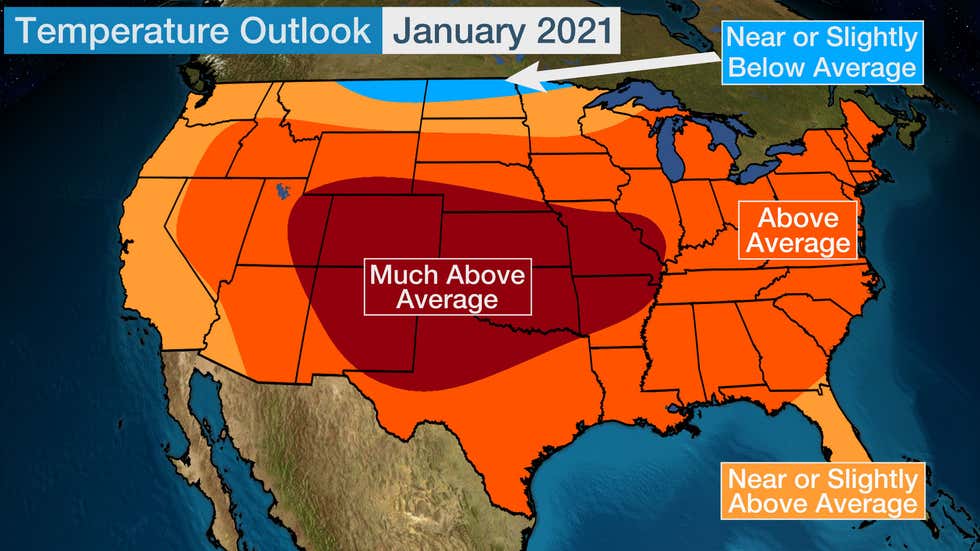
February 2021
Conditions are expected to trend warmer than average in February for most of the Lower 48. Temperatures will be far above average for a large area of the U.S., from the Northeast and much of the Southeast into parts of the Midwest and West. The most anomalous warmth will likely be found from the Lower Mississippi Valley into parts of the Central Plains and Four Corners region.
Closer to the West Coast and across portions of the northern tier, temperatures may be close to or either side of average.
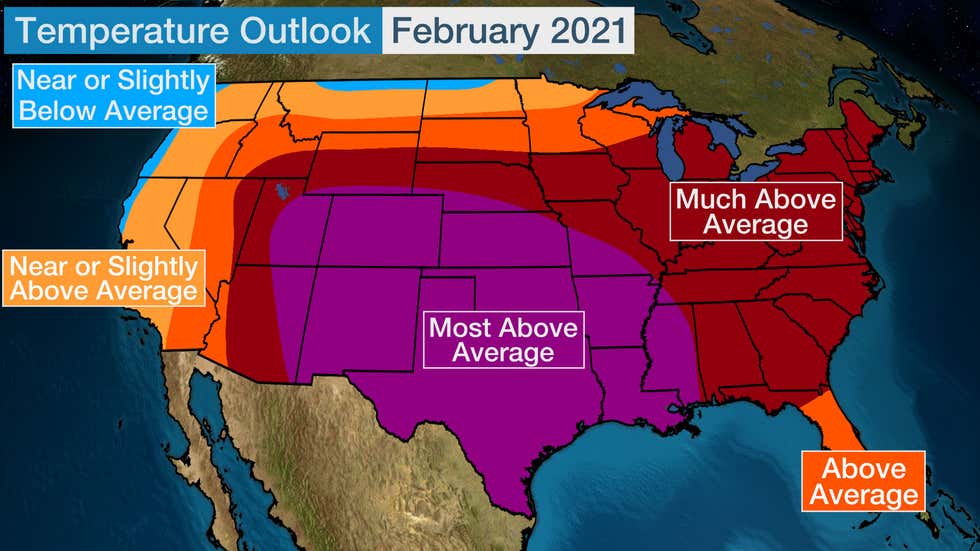
March 2021
March will likely continue the warmer-than-average trend of the first two months of the year. The East will likely experience above-average temperatures, while the Midwest and much of the South will be above average.
Farther west, temperatures will be the most above average from portions of the western Plains into the central and southern Rockies, as well as into Utah. Warmer-than-average temperatures will extend into Nevada and Southern California.
The Pacific Northwest can expect temperatures to be near-average or slightly warmer, with a trend toward slightly below-average conditions in northwestern Washington.
